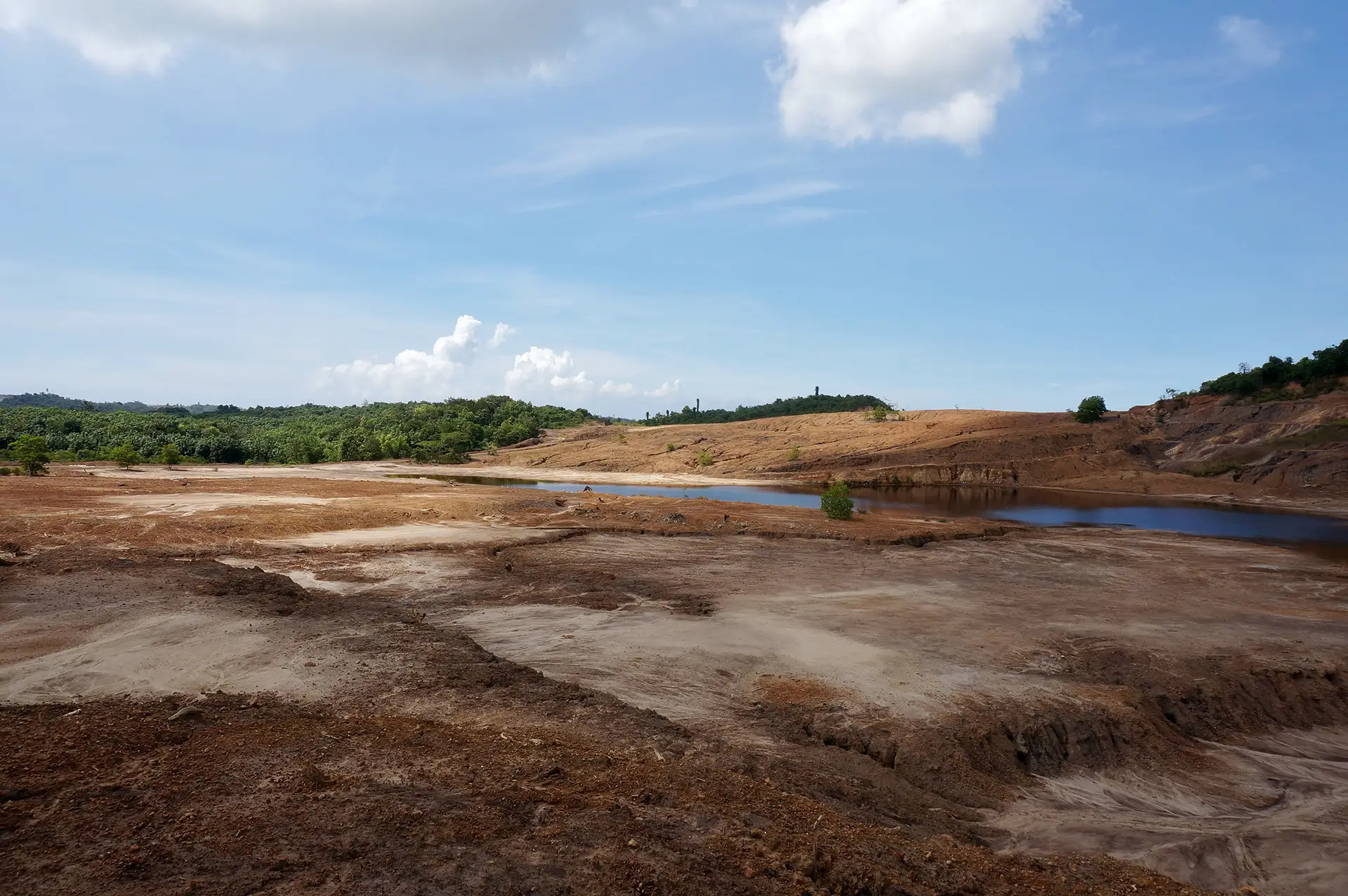- November 23, 2023

Navigating Legacy Mines: Definition, Remediation, and Opportunities for Responsible Transformation
In the mining industry, the term “legacy mine” has evolved to encompass varying references to sites with remnants of historic mining activities. The International Organization for Standardization (ISO) recently introduced the new standard ISO 24419-1, which addresses the management of mining legacies. This standard defines legacy mines as their residual impacts, encompassing both positive and negative effects that have accumulated from mining activities (ISO, 2023).
Residual impacts can extend to liabilities and hazards, including safety risks such as open workings, pits, and compromised infrastructure. Environmental risks involve potential impacts to water quality, erosion, weed infestation, and damage from acid metalliferous drainage (Department of Industry, Tourism and Trade, 2023).
Recognizing the critical importance of addressing legacy mines and their potential long-term environmental and social challenges, factors such as environmental remediation, financial considerations, and stakeholder engagement, contribute to the complexities of managing these mining legacies. In this month’s Conversation on Closure, we will explore the features of legacy mines, the potential scopes of remediation efforts, the emerging opportunities, and discuss Okane’s approach to navigating the complexities associated with legacy mines.
Defining Legacy Mine and Legacy Mine Features
As previously noted, ISO 24419-1 refers to legacy mines as sites with both positive and negative residual impacts resulting from mining activities. Another noteworthy reference to managing legacy mines comes from the Northern Territory, Australia, which is outlined in their newly proposed Legacy Mines Remediation Draft Bill.
In the draft bill, legacy mines are defined as an area where past mining activities occurred but lacked adequate security measures, including areas with extractive mineral leases, permits, authorities, mineral leases, or non-compliant existing interests (Legacy Mines Remediation Act, 2023).
The bill additionally specifies the features of a legacy mine. These features encompass any presently inactive plant, infrastructure, engineered feature, or any other feature that was initially constructed or used for mining activities, and lacks any associated mining security in place (Legacy Mines Remediation Act, 2023).
Further to defining legacy mines and delineating their distinctive features, the draft bill (2023) intends to provide a more flexible framework with the following objectives:
- Enable flexible and effective options for remediating legacy mines and legacy mine features.
- Enhance the effectiveness of the Mining Remediation Fund (MRF) by promoting research, collaboration, and expanding opportunities for legacy mine remediation in the Northern Territory.
Both ISO and the Northern Territory’s references recognize the multifaceted nature of legacy mines. These definitions collectively provide a solid framework for understanding the complexities of legacy mines and identifying their impacts. It becomes imperative for governments, communities, and subject matter experts to collaborate and co-develop effective remediation strategies and implement necessary security measures.
Legacy Mine Remediation: Addressing Environmental and Social Risk
Throughout the life of mine, is a progressive process integral to addressing and rectifying the environmental impacts resulting from mining activities. Important objectives of mine remediation range from ensuring the site’s safety and stability to transforming it into a landscape capable of sustaining future land uses, such as agriculture or other beneficial purposes (Department of Industry, Tourism and Trade, 2023).
One prevalent social risk associated with legacy mine sites is the potential exposure to hazardous waste materials through migratory pathways such as soil, groundwater, and surface water (Chen, 2023; Nash, 2020). This exposure emphasizes the urgency for authorities to implement remediation and security measures to prevent direct adverse pollution impacts on surrounding communities (Nash, 2020).
With mine legacies, successful remediation efforts require comprehensive site investigations. These investigations aid in identifying areas requiring remediation to meet the current environmental benchmarks, as effective mine remediation not only involves rectifying past disturbances during the construction and operational periods of a mine site, but also proactively ensures present and future environmental integrity.
Remediation strategies must also consider soil erosion, water quality, vegetation restoration for potential weed infestation impacts, and ongoing monitoring and compliance with legal regulations to ensure the long-term success of these efforts and the overall health of the affected communities.
Collaboration among stakeholders, community members, Indigenous rightsholders, and subject matter experts, as outlined by ISO 24419-1 (2023), is equally critical. Collective efforts to mitigate risks associated with legacy mines ensure a comprehensive consideration of all perspectives, adherence to environmental standards, and the practice of responsible methods.
Opportunities Emerging from Mining Legacy Remediation
Still, in the wake of increased awareness and commitment to address the environmental consequences of legacy mines, various opportunities related to legacy mine remediation are emerging, such as job creation and beneficial land use.
For example, proposed reforms to the Legacy Mines Remediation draft bill aim to improve oversight, management, and implementation of mining remediation for legacy mine sites, emphasizing improved governance, transparency, and collaboration (Department of Industry, Tourism and Trade, 2023). This approach fosters increased opportunities for legacy mine remediation in regional and remote locations, creating expanded prospects for Northern Territory businesses and community groups, thereby contributing to economic growth in regions affected by the mining legacy (Department of Industry, Tourism and Trade, 2023).
Also, mining legacy remediation offers a transformative opportunity to reclaim the land for sustainable and responsible land use by addressing negative legacies through approaches like mining heritage tourism and renewable energy production (Nash, 2020). Therefore, it is important to identify values and plan for acceptable management options through community involvement and stakeholder consultation, as this ensures the success of these initiatives and the reclamation of land for beneficial purposes (Nash, 2020).
Okane’s Approach
At Okane, we champion a collaborative and comprehensive approach to legacy mine sites. We like to develop thorough site biographies, examining past mining operations, construction, and waste management, to thoroughly understand the site’s potential liabilities and risks. This understanding is pivotal in designing effective remediation and reclamation strategies that address the complexities of legacy mine sites.
We actively engage with subject matter experts, key stakeholders, and community members to ensure a holistic perspective, integrate diverse expertise, and foster a collective effort toward responsible and beneficial solutions.
Our expertise also encompasses full site design of landforms and cover systems, comprehensive risk assessment, and monitoring field trials. Through approaches like adaptive management strategies, we continually refine our designs based on field monitoring data and in-depth technical studies to ensure the effectiveness and sustainability of the landform and cover designs. Adaptive management helps us identify opportunities to improve management over time without being hindered by conflicting management objectives.
Okane’s approach contributes valuable knowledge to the wider field of mine legacy remediation by implementing measures that enhance public and environmental health and safety while establishing conditions that maximize the potential for sustainable post-mining land use alternatives in the future.
References
Chen, J. (2023). Study points to need to clean up legacy mining pollution that poses health risks to millions. Mining.com. https://www.mining.com/study-points-to-need-to-clean-up-legacy-mining-pollution-that-poses-health-risks-to-millions/
Department of Industry, Tourism and Trade. 2023. Mining and environmental reforms program fact sheet: Proposed legacy mine management [Fact sheet]. Northern Territory Government. https://industry.nt.gov.au/__data/assets/pdf_file/0007/1267729/fact-sheet-m1-proposed-legacy-mine-management.pdf.
Department of Industry, Tourism and Trade. 2023. Frequently Asked Questions: Legacy mines [Fact sheet]. Northern Territory Government. https://industry.nt.gov.au/__data/assets/pdf_file/0010/1267732/faq-legacy-mines.pdf.
International Organization for Standardization. (2023). Mine closure and reclamation – Managing mining legacies — Part 1: Requirements and recommendations (ISO Standard No. 24419-1). Retrieved from https://www.iso.org/obp/ui/en/#iso:std:iso:24419:-1:ed-1:v1:en.
Legacy Mines Remediation Act. (2023). Northern Territory of Australia. https://industry.nt.gov.au/__data/assets/pdf_file/0006/1267728/consultation-draft-legacy-mines-remediation-bill-2023.pdf
Nash, K. (2020). Chapter 9: Addressing legacy sites. In B. Oberle, D. Brereton, & A, Mihaylova (Eds.), Towards zero harm: A compendium of papers prepared for the Global Tailings Review (pp. 126-141). Global Tailings Review. https://globaltailingsreview.org/wp-content/uploads/2020/08/towards-zero-harm.pdf
